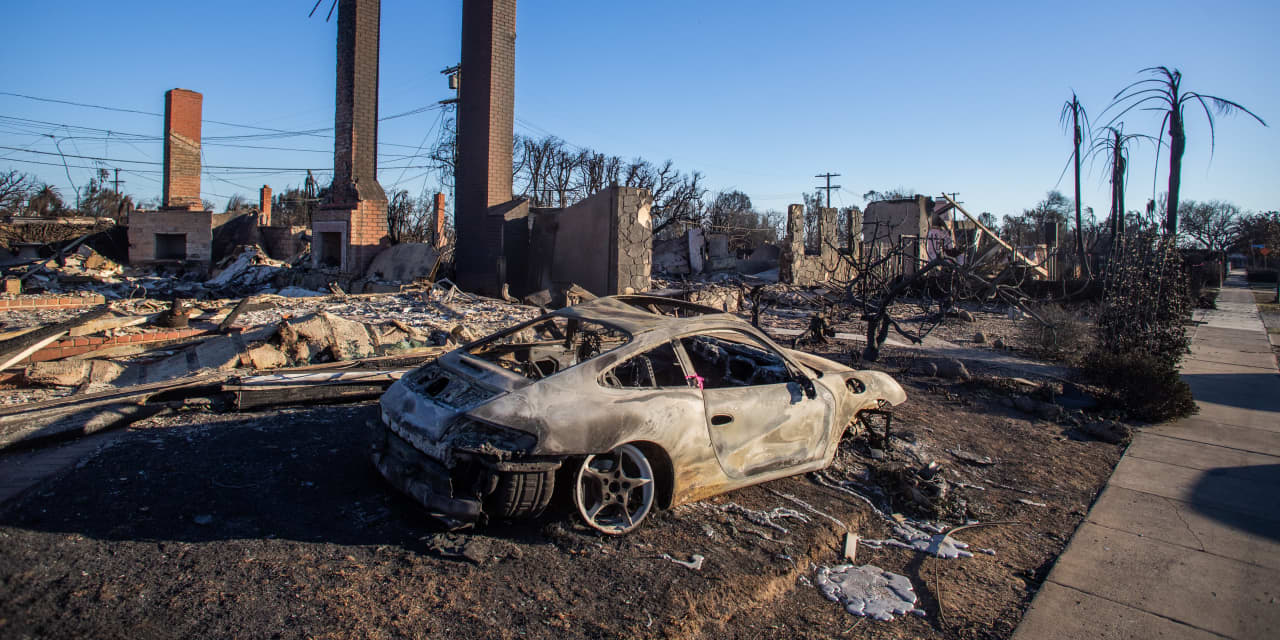The Unseen Threat: How Extreme Weather and Insurance Costs Are Reshaping Our Homes and Businesses
As climate change intensifies, the safety of our homes and businesses is increasingly jeopardized by extreme weather events. The combination of environmental risks and skyrocketing insurance costs presents a dual challenge that demands urgent attention. This article delves into the implications of these threats, exploring how they are reshaping our approach to home and business ownership while urging proactive measures for the future.
The Rising Tide of Extreme Weather Events
Over the past few decades, the frequency and severity of extreme weather events have surged dramatically. From hurricanes that devastate coastal communities to wildfires that consume vast stretches of land, the repercussions are felt far and wide. According to the National Oceanic and Atmospheric Administration (NOAA), the United States alone has seen a marked increase in the number of weather-related disasters, with 22 separate billion-dollar events recorded in 2020 alone.
This uptick in extreme weather is primarily attributed to climate change, which affects atmospheric conditions and leads to more intense storms, prolonged droughts, and unexpected weather patterns. As our planet continues to warm, the risks associated with these events grow, putting our homes and businesses in jeopardy.
The Impact on Homes
For homeowners, the implications of extreme weather are profound. Many are finding that their properties are increasingly vulnerable to damage from storms, flooding, and wildfires. This vulnerability not only threatens the safety of residents but also raises significant concerns regarding property values.
- Increased Risk of Damage: Homes located in flood-prone zones or areas susceptible to wildfires are at particular risk. Insurers are beginning to reevaluate their coverage policies based on these heightened risks.
- Property Values: As climate-related risks become more evident, potential buyers may hesitate to invest in certain neighborhoods, leading to declining property values in those areas.
- Renovation Costs: Homeowners may need to invest in fortifications against extreme weather, such as elevated foundations, flood barriers, or fire-resistant materials, increasing renovation costs.
The Business Perspective
Businesses, too, are feeling the pressure. Small businesses, which often operate on tighter budgets, face significant challenges when it comes to insuring their properties against extreme weather. With the threat of natural disasters looming larger, many business owners are reconsidering their locations and operational strategies.
- Operational Disruptions: Extreme weather can lead to business interruptions, impacting revenue streams and customer relations.
- Insurance Costs: As insurers become more cautious, businesses may find themselves facing steep premiums or even challenges in obtaining coverage altogether.
- Supply Chain Risks: Extreme weather events can disrupt supply chains, making it difficult for businesses to maintain their operations smoothly.
Skyrocketing Insurance Costs
One of the most pressing issues arising from extreme weather is the surge in insurance costs. Insurers are increasingly adjusting their rates to account for the rising risks associated with climate change. This shift poses a significant challenge for both homeowners and business owners.
Understanding the Insurance Landscape
Insurance companies use a variety of data to assess risk. With the growing prevalence of extreme weather events, insurers are forced to reevaluate their models, leading to increased premiums. What was once considered a standard rate may now be deemed insufficient in light of the changing climate.
- Premium Increases: Many homeowners and businesses are witnessing steep increases in their insurance premiums, which can be particularly burdensome for those already dealing with financial strain.
- Coverage Limitations: Some insurers may impose stricter limitations on coverage, especially in high-risk areas. This can leave property owners vulnerable to significant financial loss.
- Market Availability: In extreme cases, insurers may choose to withdraw from certain markets altogether, leaving homeowners and businesses with limited options for coverage.
Adapting to the New Normal
In light of these challenges, it’s essential for homeowners and businesses to adapt to the changing landscape. Here are some strategies to consider:
- Invest in Resilience: Strengthening properties against extreme weather can pay off in the long run. This might include investing in flood-proofing measures, fire-resistant materials, or stronger roofing systems.
- Shop Around for Insurance: With an ever-changing insurance market, it’s crucial to compare rates from different providers. Engaging with a knowledgeable insurance broker can help identify the best options.
- Stay Informed: Keeping up with local climate trends and understanding the risks associated with specific areas can empower homeowners and business owners to make informed decisions.
- Advocate for Policy Change: Engaging with local governments to advocate for sustainable building practices and infrastructure improvements can help mitigate future risks.
The Role of Technology and Innovation
Technology plays a crucial role in addressing the challenges posed by extreme weather. Innovations in building materials, such as resilient infrastructure designed to withstand extreme conditions, are becoming more prevalent. Additionally, advancements in predictive analytics and climate modeling can help homeowners and businesses better understand their risks and prepare accordingly.
Furthermore, smart home technology can enhance resilience. From flood sensors to automated climate control systems, these innovations can provide valuable information and mitigate damage during severe weather events.
A Call to Action
The unseen threat of extreme weather and rising insurance costs is reshaping our homes and businesses in profound ways. As climate change continues to escalate, it is imperative for individuals and communities to take proactive measures to safeguard their properties and livelihoods.
By understanding the risks, adapting to the new realities, and investing in resilience, we can not only protect our homes and businesses but also contribute to a more sustainable future. Together, we can weather the storms ahead and emerge more robust and prepared for the challenges that lie ahead.
See more Your Daily Weather



